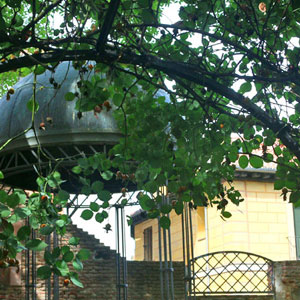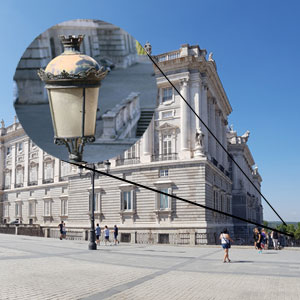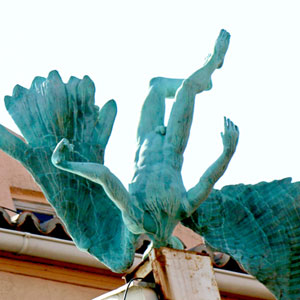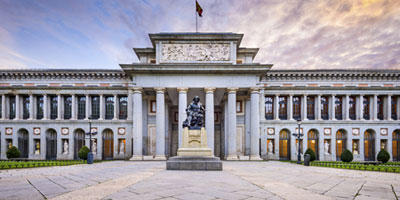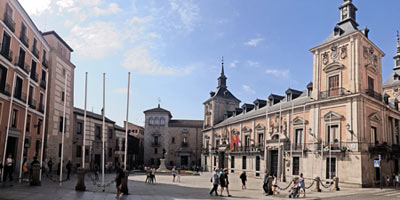Following in Cervantes' footsteps in Madrid
We will try to follow the trail of our most illustrious writer in Madrid. After his death in 1616, Cervantes fell into oblivion. Almost all of his manuscripts and unpublished works were lost and the trace of his life faded away.

Statue of Cervantes in the Plaza de las Cortes
It was not until the eighteenth century when an English aristocrat commissioned the Valencian Mayáns the first biography of Cervantes, and it is here that interest in Cervantes arose, the starting point to reach the great current recognition. Sometimes it happens that the most innovative author, the thinker, is in conflict with his time and does not yield to the temptations of what the general public would like to read.
"I well know what are temptations of the devil, and that one of the greatest is to put a man in the understanding that he can compose and print a book with which he gains as much fame as money, and as much money as fame".
(Prologue to the Second Part of Don Quixote)
The traces of Cervantes in Madrid
BARRIO DE LAS LETRAS
In this area we find most of the places we will see below. Located between the Paseo del Prado and Plaza Santa Ana, has been named in honor of the great writers who have lived in it, Cervantes, Quevedo and Lope de Vega are some of them. They stood out in number in the Golden Age, moments in which duels were disputed, envy, jealousy and also friendships coexisted with loves and heartbreaks of the most illustrious writers, all this in what is today the most bohemian neighborhood of Madrid, a place of pedestrian streets that has been able to be reconverted without losing the charm of the area. If you want to know some of these stories and walk with us through the neighborhood you can take the tour of the Barrio de las Letras
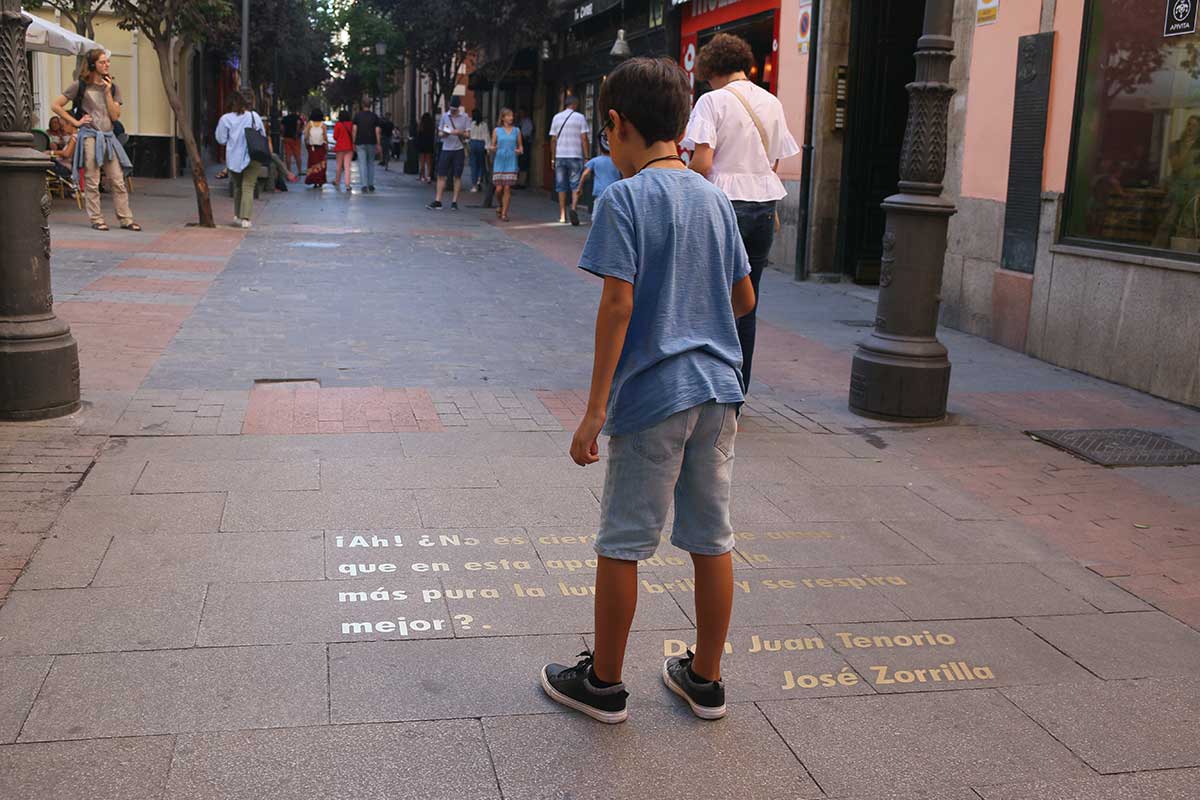
Barrio de las Letras
THE HOUSE OF CERVANTES IN MADRID
At number 2 Cervantes Street is the last house Cervantes lived in in Madrid.
In 1833 the old house, which was in ruins, was demolished, although King Ferdinand VII himself interceded, unsuccessfully, so that the State would buy it before it was demolished. In the new construction you can see an inscription that reads: "Here lived and died Miguel de Cervantes Saavedra, whose wit the world admires. He died in MDCXVI".
It is known that Cervantes lived in different houses in the Barrio de las Letras, we can see another plaque on the facade of what is now CASA ALBERTO, at 18 Huertas Street. Here he wrote the second part of Don Quixote and The Works of Persiles and Segismunda. In addition to offering traditional Madrilenian cuisine, its rooms hold memories of the literary life of the neighborhood.
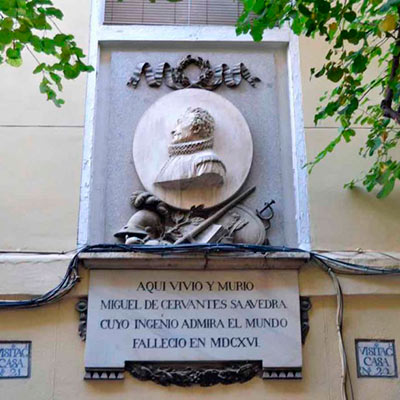
Cervantes House, 2 Cervantes Street

Cervantes House, 18 Huertas St.
PUBLIC STUDY OF HUMANITIES
Located at Calle la Villa 2, Miguel de Cervantes studied under the humanist Juan López de Hoyos, professor of grammar and director of the institution.
The house, which dated from the 16th century, was demolished in 1870 and its owner, the Countess of Vega del Pozo, proposed the installation of two tombstones, one dedicated to the author of Don Quixote and the second to the Spanish Humanists.
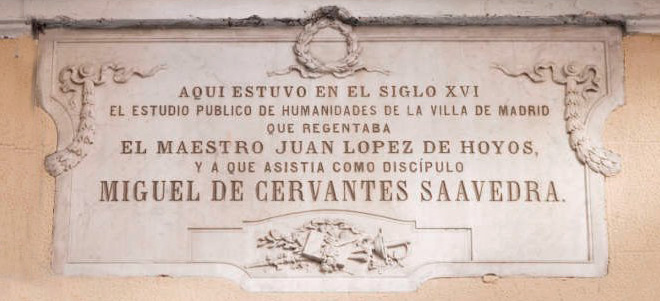
CORRAL DEL PRINCIPE
At 25 Príncipe Street we find the magnificent Teatro Español , converted into the Teatro Español , which was one of the six corrales de comedias that existed in Madrid during the Golden Age. Miguel de Cervantes, unlike Lope de Vega, never triumphed in the theater, although it was always his vocation.
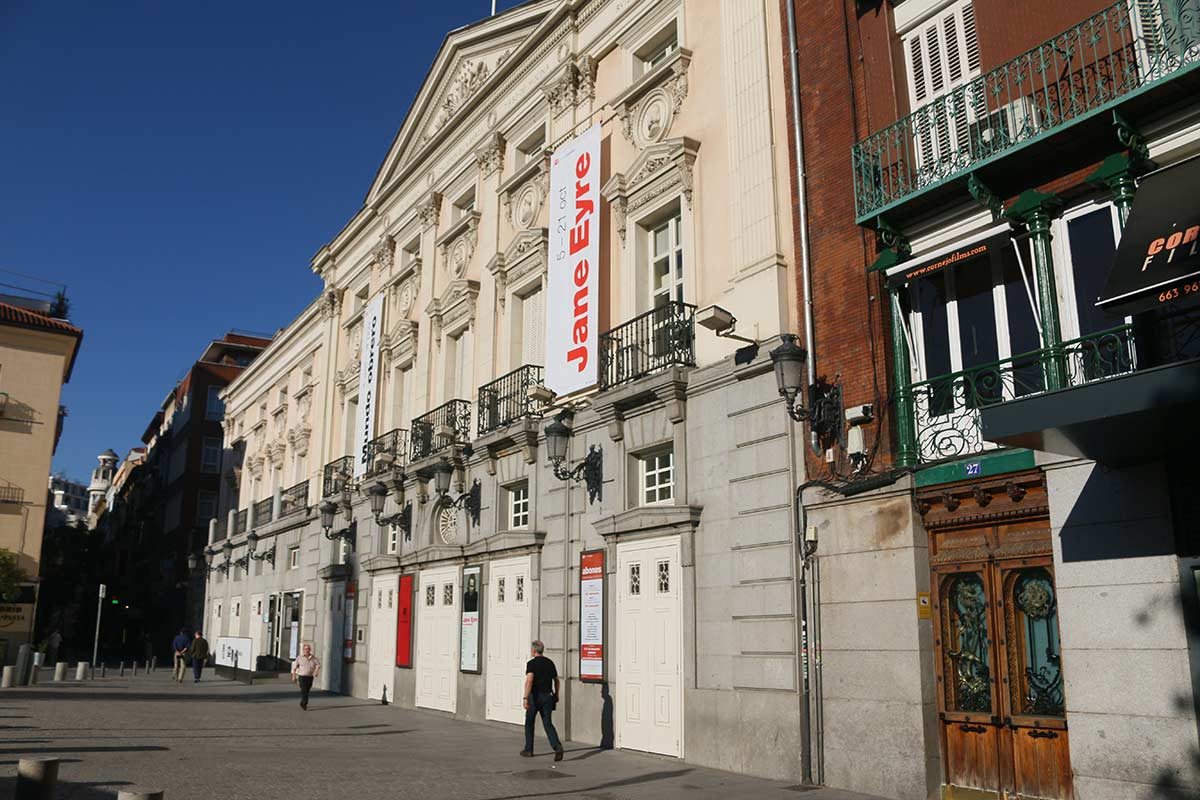
Spanish Theater
IMPRENTA
In 1586, the printing house of Pedro de Madrigal was opened in Madrid, at 87 Atocha Street, and after his death, his widow continued with the business but managed by the printer Juan de la Cuesta, who published, at the beginning of 1605, the first edition of El ingenioso Hidalgo Don Quijote de la Mancha, the greatest work of Spanish literature. Today it is the headquarters of the Sociedad Cervantina
This workshop moved in 1609 to the nearby Calle de San Eugenio 7, and in 1615 the second part of Don Quixote was printed, as attested by a plaque placed at the entrance.
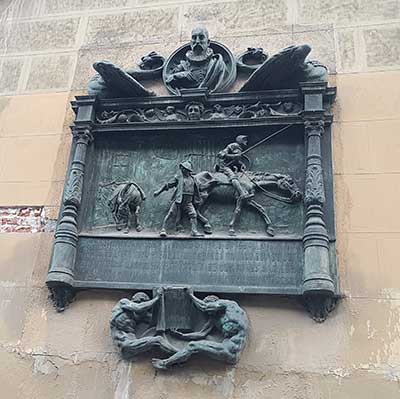
Printing of the 1st part of Don Quixote, today the headquarters of the Cervantes Society.
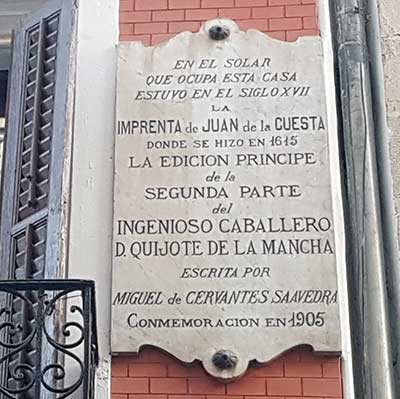
Printing of the Second Part of Don Quixote
CHURCH AND CONVENT OF THE DISCALCED TRINITARIANS
In Lope de Vega Street, 18
In 1580 the Trinitarian monks collected the necessary ransom to free Cervantes, captive in Algiers. Cervantes would always be grateful to the order and expressed his desire to be buried in the church of the convent of the Trinitarias Descalzas in Madrid. In 2015, his mortal remains were found in the crypt of the church along with those of his wife, Catalina de Salazar. Today they rest in a monument erected in his honor inside the church.

Church of the Convent of the Discalced Trinitarian Sisters of the Trinitarians
MADRID REMEMBERS THE MEMORY OF CERVANTES
In many of its institutions, streets and corners, Madrid honors the most important writer in the Spanish language.
THE CERVANTES INSTITUTE
Alcalá, 49
Its two main objectives are the promotion and teaching of the Spanish language, and the dissemination of the culture of Spain and Latin America. It is headquartered in the Cervantes building, formerly known as the Caryatids building, designed by Antonio Palacios, which today hosts exhibitions, conferences and other cultural activities.
NATIONAL LIBRARY
Paseo de Recoletos 20
The library's collection includes twenty-six editions of Don Quixote printed in Spanish in the seventeenth century and valuable twentieth-century editions, as well as curiosities of all kinds: imitations, continuations, plays about Cervantes, studies, lectures, catalogs, bibliographies, etc.. But above all, a first edition of Don Quixote stands out. As accessing this copy is, as you can imagine, very complicated, you can consult it by means of the interactive Quixote. At the door of the building we can find a statue of Miguel de Cervantes by the sculptor Juan Vancell.
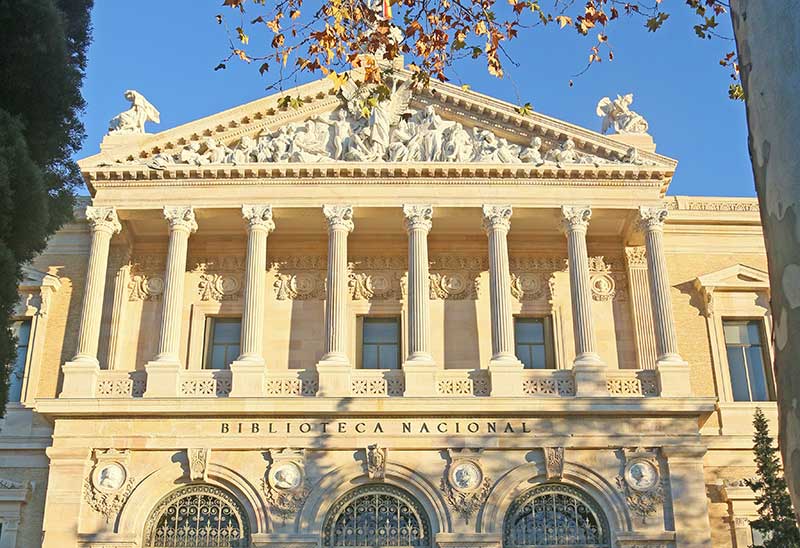
National Library
CERVANTES MONUMENT
In Plaza España
We can see Cervantes seated, and the bronze statues of Don Quixote and Sancho Panza. Today Plaza España is under construction and the monument cannot be visited.
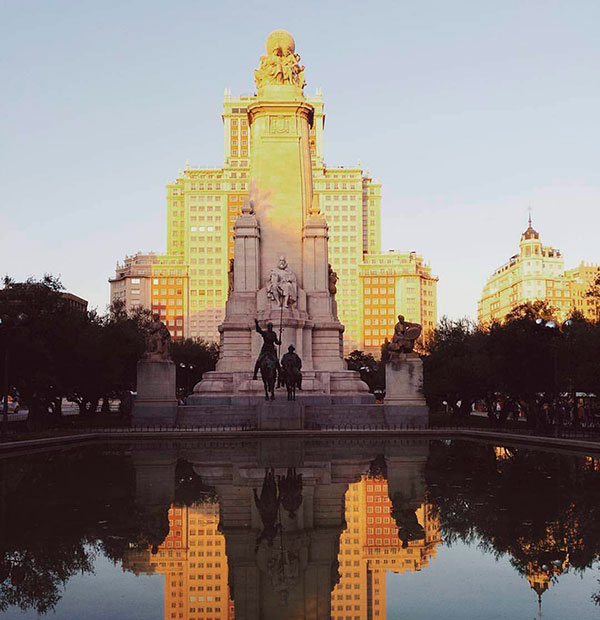
Monument to Cervantes
STREETS RELATED TO CERVANTES
The name of many streets in Madrid are related to Cervantes and his works, we can mention Cervantes street where he lived and died and where curiously we find the House-museum of Lope de Vega, Don Quixote street in four roads, Sancho Panza street in Vallecas, Dulcinea street, Rocinante street and many others.
STATUES OF CERVANTES
We find one in the Plaza de las Cortes (in front of the Congress), another one in Arcentales Avenue number 12, and the ones we have already mentioned above: the one at the door of the National Library and the one at the monument to Cervantes in Plaza España.
ALCALÁ DE HENARES
40 kilometers from the center of Madrid we find the city where Cervantes was born, today a World Heritage Site, it is worth a visit and discover all its charms. You can get there on the Cervantes Train that departs from Atocha Station.
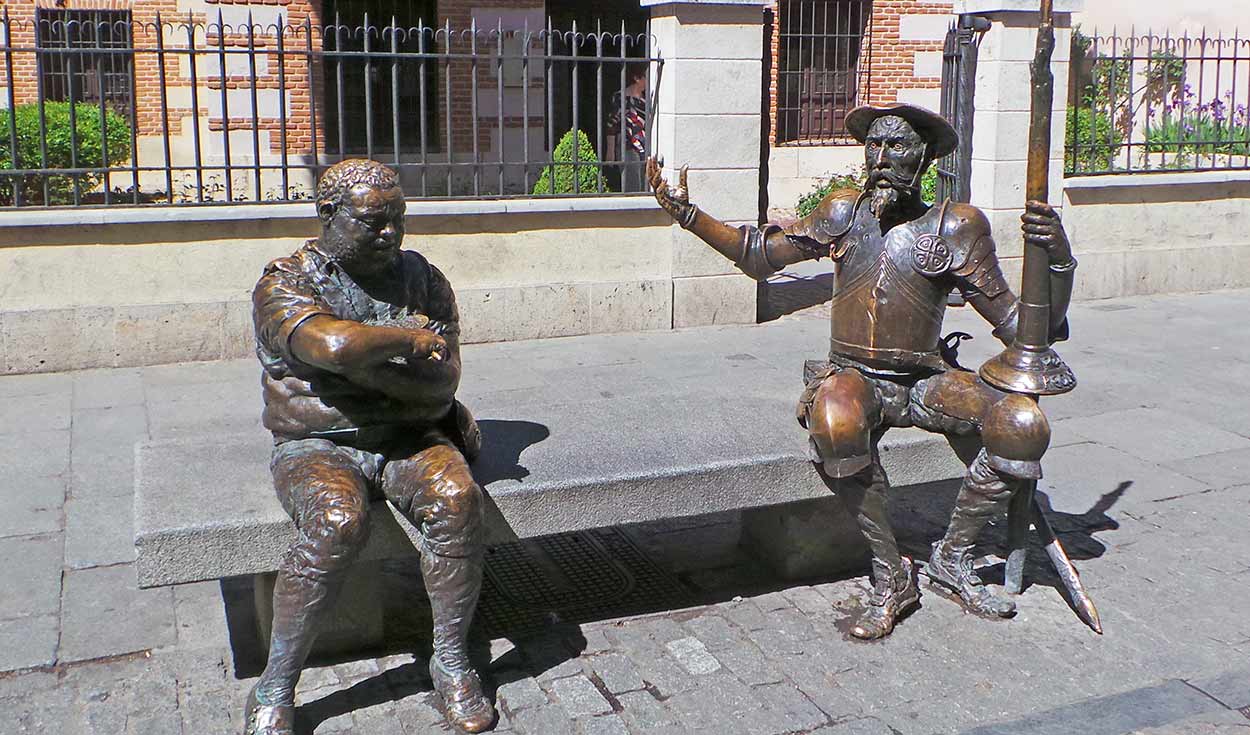
Don Quixote and Sancho Monument in Alcalá Henares
Tags
LATEST ARTICLES
THIS INTEREST YOU
The Capitol Building in the Gran Vía Madrileña: It is undoubtedly one of the most symbolic buildings in Madrid, located in the Plaza de Callao, houses one of the most characteristic ads of the Gran Vía, the Schweppes ad. ...read more
A ROMANTIC GARDEN IN THE CENTER OF MADRID: To enjoy with a book or spend a few moments with your partner in one of the most romantic places in Madrid.....read more
Most VIEWED
MADRID MUSEUMS GUIDE: This guide is intended as a reference to give you an idea of the museums in Madrid. The museums have been placed according to a thematic criterion even though they are with....read more
THE FALLEN ANGEL OF THE RETIRO: In the Parque del Buen Retiro in Madrid there is a point where the Madrilenians stay, the Fountain of the Fallen Angel. Always crowded with pedestrians, bicycles and roller skates.....read more
THE LAMP OF THE REPUBLIC THAT LIGHTS THE ROYAL PALACE: If you walk along Bailen street in front of the Royal Palace in its north-east corner, the one that faces the Sabatini gardens, and you look at...read more
Activities that may interest you...
Let us tell you the stories behind them and how to interpret artistically the paintings of Goya, Velazquez, Rubens, El Bosco...
We will visit the old Madrid, its historic center, the part of the city that flourished with the house of the Austrias, the most requested tour!
Free
Are you ready to know the sinister mysteries of the city? Madrid hides witches, ghosts, demons and severed heads.
Free




